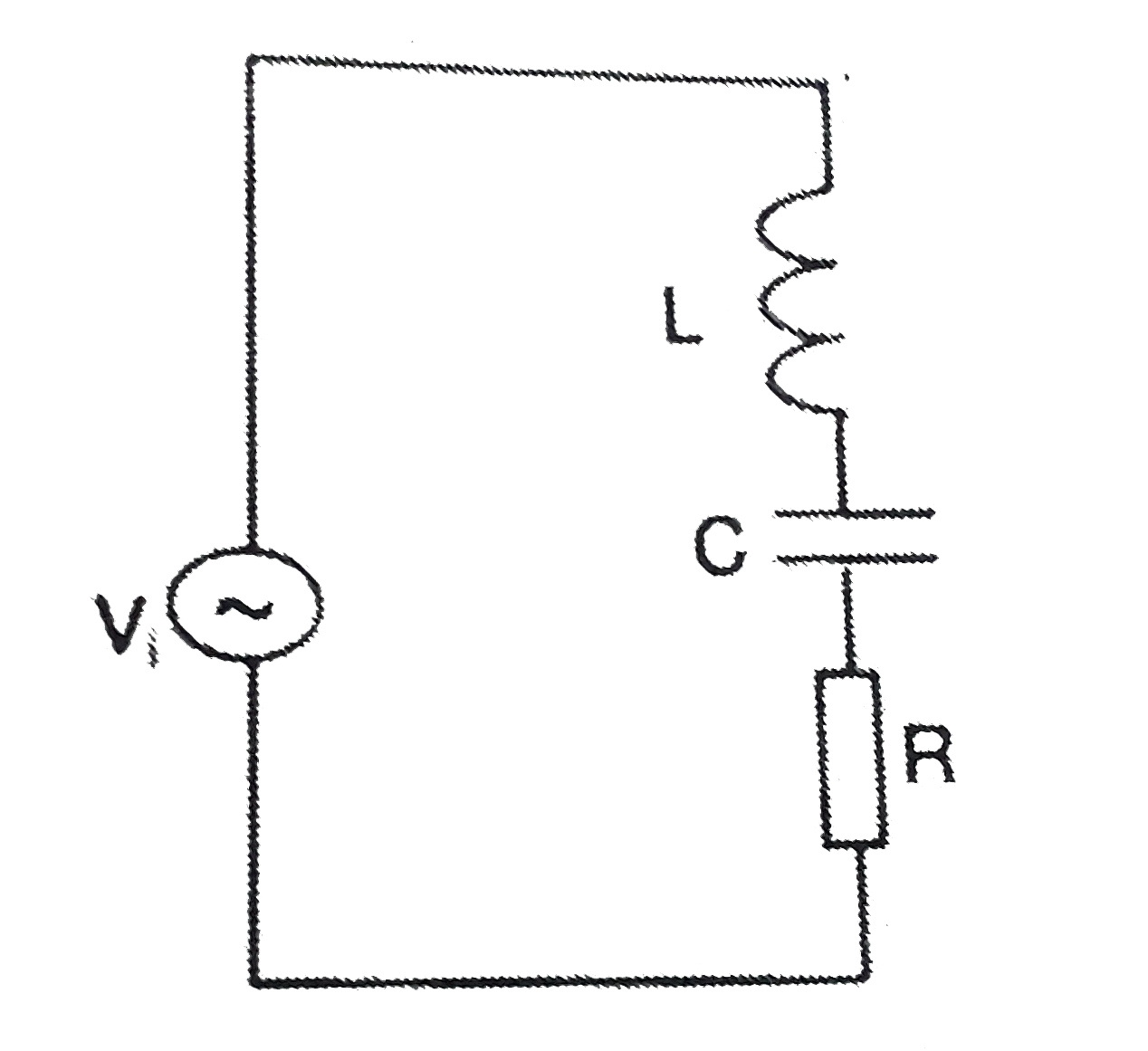When an alternating voltage of 220 V is applied across a device X, a current of 0.25 A flows which lags behind the voltage in phase by π2 rad. If the same voltage is applied across another device Y, the same current flows but now it is in phase with the applied voltage.
(a) Name the devices X and Y.
(b) Calculate the current flowing in the circuit when the same voltage is applied across the series combination of X and Y.
(a) As in device X the current I lags behind voltage V by π2 the device X is an inductor L. In device Y the current I and voltage V are in phase, the device Y is a resistor.
(b) XL=R=220V0.25A=880Ω
When L and R both are connected in series, the total impedance, Z=√R2+X2L
∴ Current I=VZ=V√R2+X2L=220√(800)2+(880)2=220800√2=14√2A=0.18A
Topper's Solved these Questions
- ALTERNATING CURRENT BOOK - U-LIKE SERIESCHAPTER - ALTERNATING CURRENT EXERCISE - LONG ANSWER QUESTIONS -I
26 Videos
- ALTERNATING CURRENT BOOK - U-LIKE SERIESCHAPTER - ALTERNATING CURRENT EXERCISE - LONG ANSWER QUESTIONS -II
12 Videos
- ALTERNATING CURRENT BOOK - U-LIKE SERIESCHAPTER - ALTERNATING CURRENT EXERCISE - VERY SHORT ANSWER QUESTIONS
28 Videos
- ATOMSBOOK - U-LIKE SERIESCHAPTER - ATOMSEXERCISE - SELF ASSESSMENT TEST (SECTION C)
2 Videos
Similar Questions
(a) Draw graphs showing the variations of inductive reactnace and capacitive reactance with frequency of the applied ac source .
(b) Draw the phasor diagram for a series RC circuit connected to an ac source.
(c ) An alternating voltage of 220 V is applied across a device X , a current of 0.25 A flows , which lag behind the applied voltage in phase by π2 radian . If the same voltage is applied across another device Y , the same current flows but now it is in phase with the applied voltage .
(i) Name the devices X and Y.
(ii) Calculate the current flowing in the circuit when the same voltage is applied across the series combination of X and Y.

View SolutionWhen an alternating voltage of 220V is applied across a device P, a current of 0.25A flows through the circuit and it leads the applied voltage by a angle π2 radian. When the same voltage source is connected across another device Q, the same current is observed in the circuit but in phase with the applied voltage. What is the current when the same source is connected across a series combination of P and Q?
View Solution
Knowledge Check
When an alternating voltage of 220V is applied across a device P, a current of 0.25A flows through the circuit and it leads the applied voltage by a angle π2 radian. When the same voltage source is connected across another device Q, the same current is observed in the circuit but in phase with the applied voltage. What is the current when the same source is connected across a series combination of P and Q?
A14√2 A lagging in phase by π4 with voltageB14√2 A leading in phase by π4 with voltageC1√2 A leading in phase by π4 with voltageD14√2 A leading in phase in π2 with voltageIn the following circuit the current is in phase with the applied voltage. Therefore, the current in the circuit and the frequency of the source voltage respectively, are
 AVRand12π√LCBzero and1√LCC√CLv,and2π√LCD√CLR2and2√LC
AVRand12π√LCBzero and1√LCC√CLv,and2π√LCD√CLR2and2√LCIf an alternating voltage V=V_0 sin omegat is applied across an inductance I, the current through the inductance will be
AI=I0sinωtBI=I0sin(ωt+π/2)CI=I0sin(ωt+π/2)DI=I0sin(ωt+π)
When an alternating voltage of 220V is applied across a device P, a current of 0.25A flows through the circuit and it leads the applied voltage by a angle π2 radian. When the same voltage source is connected across another device Q, the same current is observed in the circuit but in phase with the applied voltage. What is the current when the same source is connected across a series combination of P and Q?
View SolutionIn the following circuit the current is in phase with the applied voltage. Therefore, the current in the circuit and the frequency of the source voltage respectively, are

View SolutionWhen a circuit element X is connected across on a.c. source of e.m.f. 220√2 volt, current of √2 A flows through it in phase with the voltage. When another element Y is connected across the same a.c. source, the same current flows through the circuit, but it leads the voltage by π/2 radian. Name the circuit element X and Y.
Find the current that flows in the circuit when series combination of X and Y is connected across the same source.
View SolutionWhen a circuit element X is conneted across a.c. source, a current √2A flows through it and this current is in phase with applied voltage. When another element Y is connected across same a.c. source, the same current flows in the circuit, but it leads the voltages by π/2. Name the circuit elements X and Y. Find current that flows in the circuit when series combination of X and Y is connected acorss same a.c. voltage. Plot a graph showing variation of net impedance of series combination of X and Y as a function of angular frequency of applied voltage.
View SolutionIf an alternating voltage V=V_0 sin omegat is applied across an inductance I, the current through the inductance will be
View Solution
